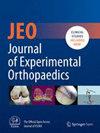Enhancing implant placement to achieve optimal gap balance is crucial in total knee arthroplasty (TKA). Given the limited precision of traditional instrumentation, tools like computer-assisted surgery and robotic-assisted TKA have emerged. This experimental cadaveric study aimed to evaluate the accuracy and reproducibility of the collaborative image-free Robin robotic system to support its future clinical application.
Fifteen cadaveric specimens were treated by eight experienced TKA surgeons. All surgeons, experts in computer-assisted TKA but new to the Robin system, received standardized training. The Robin system uses a robotic arm to position and hold a universal cutting jig, while surgeons perform osteotomies. The indicator for registration repeatability was the alignment of the cutting block position with the previous pin placement. Bony resection, angles and axes were evaluated by comparing the preoperative planning values to the ones obtained with the Robin system with a validated navigation system.
There were no statistically significant differences between the planned and measured values for most resection angles, except for femoral and tibial orientation on sagittal plane (0.6 ± 0.8° and 0.6 ± 1.0°, respectively). Similarly, no statistically significant differences were recorded for resection thickness values, except for the distal medial femoral cut (0.8 ± 0.7 mm). Moreover, these results showed consistency among the different first-time users.
The study found that the Robin robotic system closely matched the preoperative plan for TKA, demonstrating high accuracy and consistency among first-time users. This allows surgeons to easily achieve their planned targets without having to adapt their surgical technique, potentially improving both efficiency and outcomes even when handling complex cases.
Not applicable.



